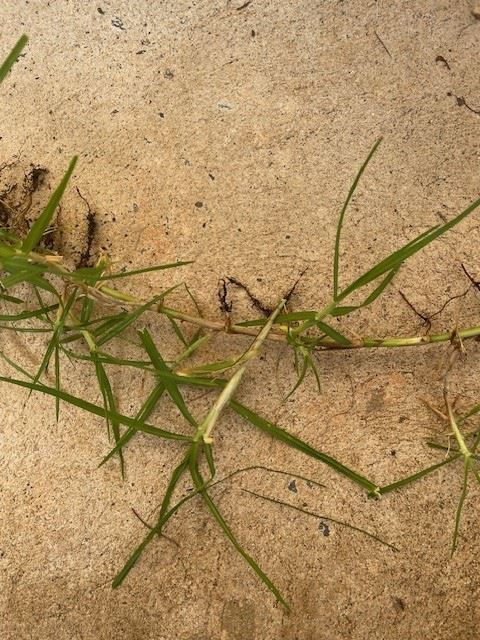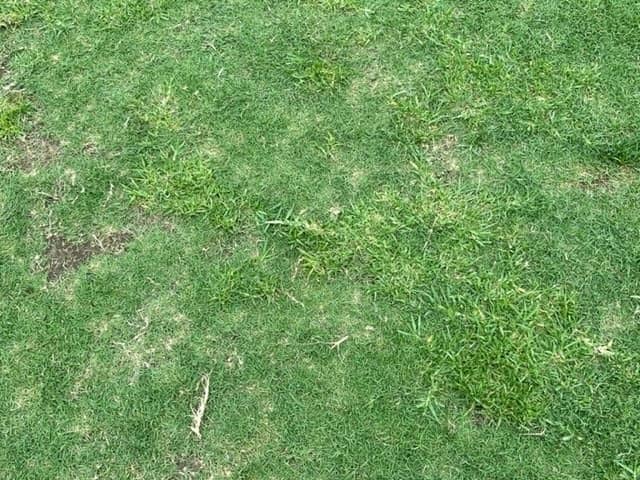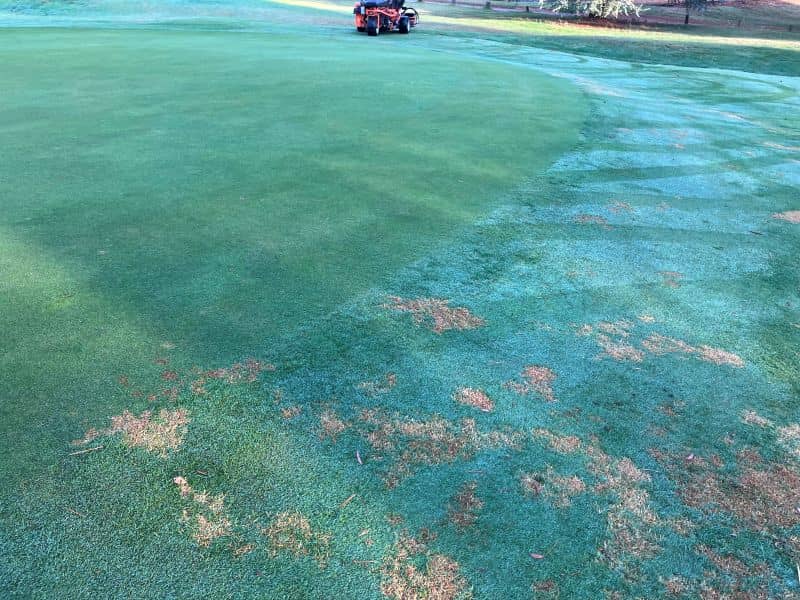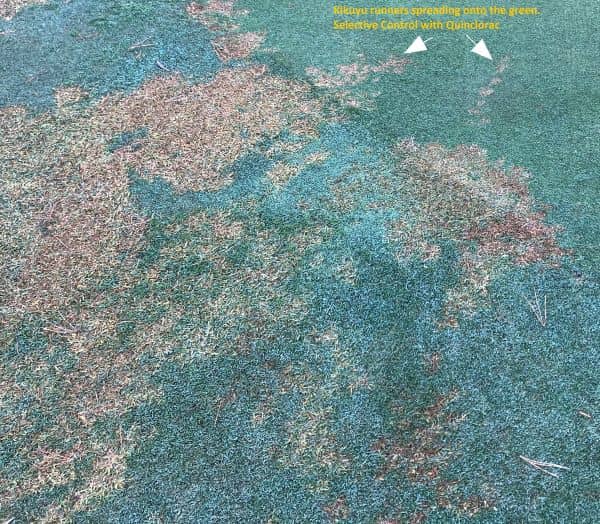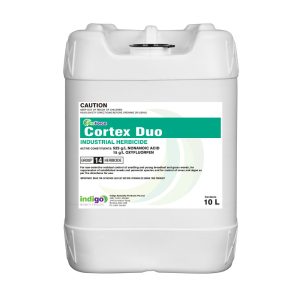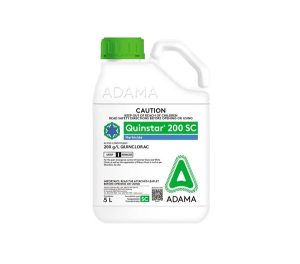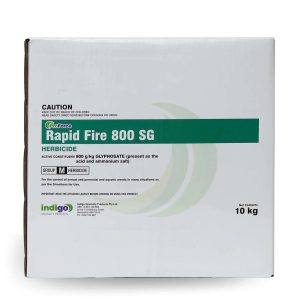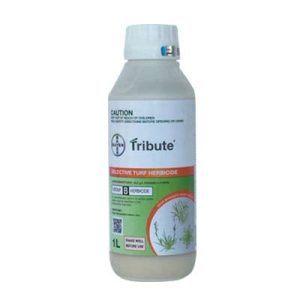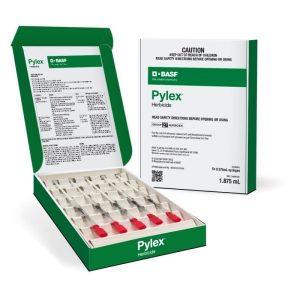Kikuyu Grass (Cenchrus clandestinus).
Kikuyu Grass is a warm-season perennial grass. Cenchrus clandestinus (previously Pennisetum clandestinum), is a tough, mat-forming grass, and is an aggressive weed in some situations. We discuss the lifecycle and best herbicides to manage Kikuyu.
In warm weather, Kikuyu grass spreads quickly by both stolons and rhizomes. These invade nearby surfaces and crowd out desirable turf species. Over time Kikuyu tends to develop an undesirable thatch layer of rhizomes or stolons.
Kikuyu Grass is a native of East and South Africa, and you find this grass almost entirely in areas where the minimum average temperatures are above 16°C.
After you read this, you will be able to:
- Identify Kikuyu Grass.
- Know the habitat of Kikuyu Grass or Cenchrus clandestinus.
- Know the best options to control Kikuyu Grass.
Why is Kikuyu Grass a Problem?
- Kikuyu is an aggressive weed grass that shades out and chokes other plants.
- It grows rapidly in warm conditions and is tolerant of cool weather.
- Kikuyu Grass produces toxins that kill other plants.
- It is resistant to mowing due to its strong network of roots. These easily send up new shoots.
- It damages buildings by growing in the gaps between stones and tiles.
- When livestock consume large quantities of Kikuyu it causes staggers.
Kikuyu grows quickly and is a common problem in Buffalo Grass. These grasses both look similar, so quite often you can’t see the Kikuyu until it’s too late. By then much of your lawn will then be dominated by kikuyu.
For more information, please check out our weed ID chart.
The Distribution map of Kikuyu grass in Australia is courtesy of The Atlas of Living Australia.
Other Fast Growing Weed Grasses.
- Paspalum.
- Onion Grass or Guildford Grass.
- Summer Grass.
- Crowsfoot Grass.
- Ryegrass.
- Wintergrass.
Table of Common Grass Weeds
Turf Weed Grass Comparison Table | ||||||
Characteristic | Kikuyu | Crowsfoot | Onion Grass | Summergrass | Paspalum | Wintergrass |
Scientific Name | Cenchrus clandestinus | Dactylis glomerata | Romulea rosea | Digitaria sanguinalis | Paspalum dilatatum | Poa annua |
Growth | Warm | Cool | Cool | Warm | Warm | Cool |
Photosynthetic Pathway | C4 | C3 | C3 | C4 | C4 | C3 |
Growth Habit | Creeping perennial | Clumping perennial | Bulbous perennial | Annual | Perennial | Annual and Perennial |
Appearance | Dense, coarse, bright green | Coarse, clumping tufts | Thin, grass- like leaves | Fine, spreading | Coarse dark green | Fine texture |
Root System | Deep, extensive rhizomes | Deep taproot | Small bulbs | Shallow fibrous | Deep rhizomes/stolons | Shallow fibrous |
Drought Tolerance | Excellent | Good | Poor | Moderate | Excellent | Poor |
Wear Tolerance | Good | Moderate | Poor | Poor | Poor | Poor |
Shade Tolerance | Poor | Moderate | Good | Poor | Moderate | Good |
Maintenance Level | High (aggressive growth) | Moderate | Low | Low (annual) | Moderate | Low |
Water Requirements | Moderate once established | Moderate | High | Low | Low | Moderate |
Reproduction | Runners/stolons | Seed | Bulbs | Self- seeding | Seed, rhizomes (underground stems) | Seed |
Growth Rate | Very fast | Moderate | Slow | Fast | Moderate | Moderate |
Common Issues | Invasive, hard to control | Patchy | Weedy | Crabgrass- like weed | Outcompete other plants and suppresses desirable vegetation | Weedy, short lived |
Advantages | Extremely durable, self- repairing | Low water needs, hardy | Low maintenance | Self- seeding | Drought tolerant | Fills bare spots quickly |
Disadvantages | Invasive, coarse texture | Coarse appearance | Not true turf grass | Annual weed | Very clumpy | Weak, short lived |
Key Notes: Desirable Turf Grasses: Kikuyu Grass: Excellent for high-traffic areas but requires management to prevent invasion. Weed Grasses (Undesirable): Crowsfoot: Weed. Onion Grass: A bulbous plant, not a true grass. Summer Grass: Considered a weed. Winter Grass: Annual weed that dies back in summer, leaving bare patches. | ||||||
Kikuyu Grass Identification.
Category: Kikuyu is a C4 Grass.
Flower: The seed heads form from the Spring through to the Autumn. You can see these as two to four orange spikelets that are between 3 to 5 mm long.
Height: Kikuyu grows to a height of 7 to 15 cm.
Leaf Length: The leaves of Kikuyu are up to 5 cm long.
Leaf width: Kikuyu leaves are 3 to 7 mm wide.
Reproduction: Kikuyu Grass spreads by vegetative rhizomes and by seed. The rhizomes continue to grow as separate plants if you snap them off when you attempt to remove this grass by hand.
Comments: The pale green leaves are hairy with a folded venation. They have a hairy ligule and sheath.
Habitat: Kikuyu Grass is a good indicator weed of very low soil Ca and P, high K, and very high Mg and Fe.
You often find this weed in gardens, lawns, roadsides and waste areas.
Kikuyu Grass Control.
Cultural Control.
You can control Kikuyu Grass (Cenchrus clandestinus), and even completely eradicate it by cultural means. However this approach is not easy and takes time.
Hand Removal of Kikuyu Grass.
- The nature of Kikuyu Grass makes hand removal of large infestations difficult, and it takes repeated efforts to deal with it.
- It’s important to remove all the stolons and underground rhizomes. This is because any stolons or rhizomes that remain are likely to re-grow into new plants.
- Any material you dig up, you need to remove off-site.
Chemical Control of Kikuyu Grass.
Pre-emergent Herbicides for Kikuyu Grass.
There are no pre-emergent herbicides registered in turf to prevent Kikuyu (Cenchrus clandestinus).
Post Emergent Control of Kikuyu Grass.
You are best to spray Kikuyu when it is young, and actively growing. If you spray when the plant is under stress the herbicide will not be taken up.
Several post-emergents are available for Kikuyu control.
- Ethofumesate.
- Trifloxysulfuron (Recondo 100WG). This only suppresses Kikuyu Grass. Use this Kikuyu herbicide with a non ionic surfactant like Optispread 1000.
- Quinclorac (Quinstar). This only suppresses Cenchrus clandestinus, but it is safe on cool and warm season turf. To get the best results use this with an MSO adjuvant.
- Topramezone (Pylex). You cannot use this on warm season turf.
- MSMA (Geronimo). You need to make several applciations to get on top off MSMA when you use it as a herbicide for Kikuyu grass.
- Triclopyr. Triclopyr is not currently registered to control Kikuyu in turf but it is used in the USA.
- Foramsulfuron (Tribute Selective Herbicide). Tribute Selective is safe on couch, and so is a selective option to manage Kikuyu Grass.
- You can increase the uptake and translocation of Tribute if you pre-treat Kikuyu with MSMA.
How to Get the Best from Quinclorac for Kikuyu Control.
- Autumn is an ideal time to achieve good results from an application of Quinclorac. This is because in the Autumn carbohydrates tend to move into the root system of Kikuyu. This movement enhances the speed and degree of Quinclorac activity.
- Make two applications, 14 to 21 days apart.
Research to Control Kikuyu.
- US research shows that MSMA, and Quinclorac do not control Kikuyu with only one application.
- Instead aim to apply these every 4 to 5 weeks over a 5 month period.
- Sequential applications of two-way combinations of these herbicides in 1991 gave reductions of Kikuyu from 80% to less than 1% of the sward.
- Work at the University of California shows that a tank mixes of Triclopyr + Quinclorac + MSO or Quinclorac + Carfentrazone + MSO are safe to use on perennial ryegrass and mixed perennial ryegrass/Poa annua to control Kikuyu. The former mix is NOT safe to use on couch as it will damage it.
Best Herbicides for Kikuyu.
Product | Active | Chemical Group | Rate | Comments | |
Pylex | Topramezone | 27 | 0.375 mL/ 100 m2 in 4-6 L water + 0.5% MSO | Apply to actively growing weeds. Two repeat applications 21-28 days apart are required for optimum control. Some minor transient bleaching of Bentgrass may be observed 7-14 days post application. For best results do not water or irrigate for 24 hrs post application. | |
Geronimo | MSMA | 0 | 3-6L/Ha | 6 L/ha in 300 L of water for boom application or 3 L/ha applied twice approximately 10 days apart | |
Quinstar | Quinclorac | 4 | 4.1 L/Ha | For kikuyu suppression, apply twice, 14 to 21 days apart. Best results are gained from Autumn applications. The addition of a crop oil adjuvant may improve weed control in unfavourable weather conditions. | |
Recondo | Trifloxysulfuron | 2 | 300g/Ha | For kikuyu suppression, make two applications 21-28 days apart, ideally in the Autumn. | |
Tribute Selective Herbicide | Foramsulfuron | 2 | 2 L/Ha | Apply three times at 14-day intervals. | |
Non Selective Control of Kikuyu.
You cannot use any of these on lawns or turf areas to selectively remove Kikuyu Grass.
- Glufosinate-ammonium provides control for 4 to 6 weeks, but it regrows and recovers due to the limited movement of glufosinate.
- Glyphosate. You can use Glyphosate but if water quality is an issue then use ProForce Manta Ray.
- When you spray Kikuyu with Glyphosate you’ll get best results if you DO NOT add a wetter/penetrant.
- On dense infestations if you first cut it and then spray the fresh regrowth you get better results.
The products listed below are non-selective but also have a long term residual and stop any re-growth of Kikuyu.
- Renegade. Renegade stops the germination of Kikuyu seed for up to 12 months.
- Numchuk Quad. This gives post and pre emergent control for up to 12 months.
- Cortex Duo. Cortex Duo gives a rapid knockdown plus residual control for up to 3 months. It is also safe to use around trees.
Table of Non Selective Herbicides for Kikuyu.
Product | Active | Chemical Group | Rate/Ha |
Glufosinate 200 | Glufosinate-ammonium | 10 | 1-6L |
Rapid Fire 800 | Glyphosate | 9 | 0.9-1.35 Kg |
Numchuk Quad | Terbuthylazine + Glyphosate + Amitrole Oxyfluorfen | 5 + 9 + 34 + 14 | 20-25L |
Cortex Duo | Nonanoic Acid + Oxyfluorfen | 14 | 7L/1000L |
Renegade | Bromacil | 5 | 3.5-6.5Kg |

